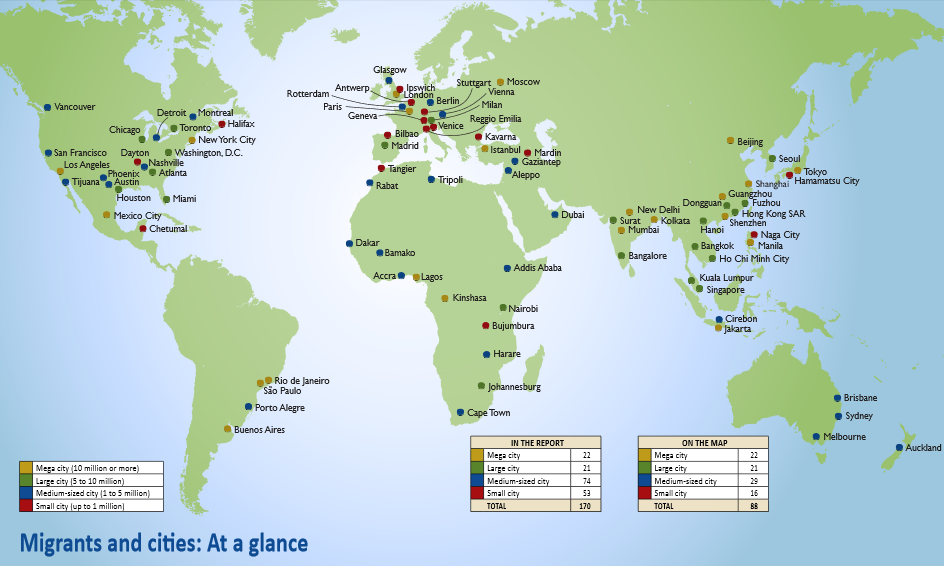What are the world’s migration ‘mega-cities?’

Migration remains ‘essentially an urban affair’ according to a new report published by the International Organisation for Migration. The World Migration Report 2015 – Migrants and Cities: New Partnerships to Manage Mobility estimates that there are 232 million international migrants and 740 million internal migrants around the world. Nearly 50% of all international migrants reside in ten “highly urbanized, high-income countries”. Those were identified as Australia, Canada, the United States, France, Germany, Spain, United Kingdom, the Russian Federation, Saudi Arabia and the United Arab Emirates.
In the Asia-Pacific region, an estimated 120,000 people are migrating to urban areas daily. With that kind of movement, the number of people living in urban areas is expected to increase by 63% by 2050 in that region.
Africa has also seen a rapid increase in its urban population. In 1960, the only city in sub-Saharan Africa with a population of over 1 million people was Johannesburg. Ten years later, there were four cities. By 2010 that number had sky-rocketed to 33 cities.
Of all the cities that both internal and international migrants chose as their new home, some stand out as the most popular. These migration ‘mega cities’ host migrant populations of over 10 million people. Those cities, in alphabetical order, are:
Beijing
Buenos Aires
Guangzhou
Istanbul
Jakarta
Kinshasa
Kolkata
Lagos
London
Los Angeles
Manila
Mexico City
Moscow
Mumbai
New Delhi
New York City
Paris
Rio de Janerio
Sao Paulo
Shanghai
Shenzen
Tokyo
The study is optimistic that, while enormous challenges come with the rapid growth in urbanised areas, great opportunities also exist. In particular, migration can bring with it an increase in productivity and improve global competitiveness. The key to achieving this, it says, is innovative approaches to migrant inclusion. As the report explains: “A recent study found a strong correlation between effective provision of services and urban development in all of the major emerging economies (EPF and CIRD, 2013). In pursuing more inclusive urban governance, cities today link local urban social cohesion to economic growth and global competitiveness (Metropolis, 2011). The participation and inclusion of migrants in their host cities is an indispensable part of building stable, open and vibrant communities that assure the socioeconomic future of a country.”
Author: Donald Armbrecht is a freelance writer and social media producer.
Image: People walk across a street in Tokyo. REUTERS/Stringer
Don't miss any update on this topic
Create a free account and access your personalized content collection with our latest publications and analyses.
License and Republishing
World Economic Forum articles may be republished in accordance with the Creative Commons Attribution-NonCommercial-NoDerivatives 4.0 International Public License, and in accordance with our Terms of Use.
The views expressed in this article are those of the author alone and not the World Economic Forum.
Forum Stories newsletter
Bringing you weekly curated insights and analysis on the global issues that matter.
